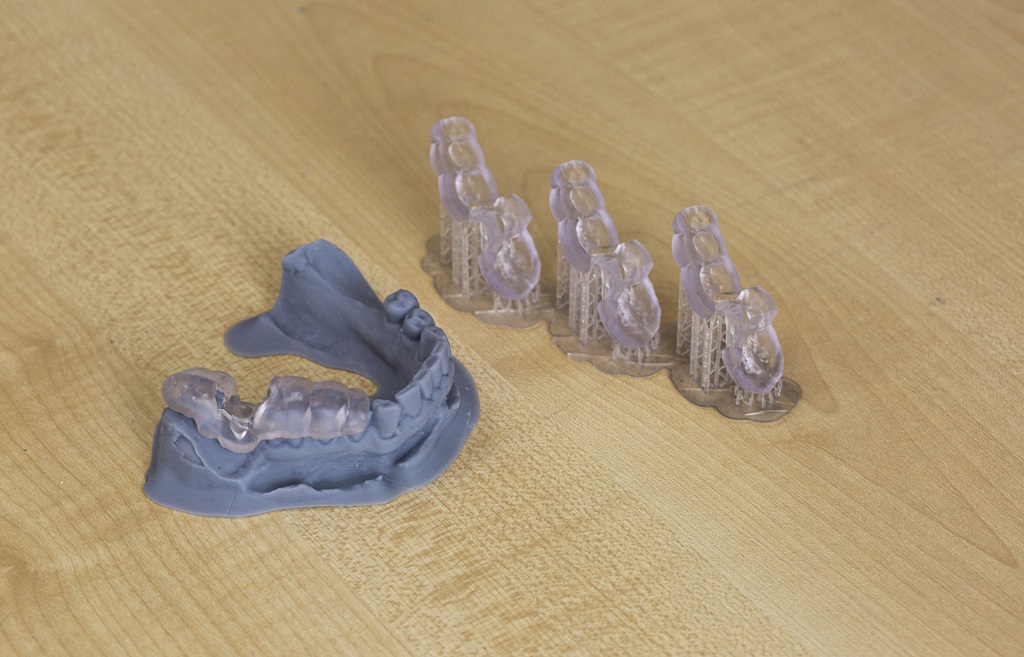![3D printed dental surgical guides [Image: Zortrax]](https://fabbaloo.com/wp-content/uploads/2020/05/3DPrintedDentalSurgicalGuides_img_5eb094b919ce0.jpg)
Zortrax has introduced biocompatible resins for its Inkspire 3D printer.
The Inkspire was introduced last year as the company’s first foray into resin 3D printing, operating with UV LCD technology. It debuted with a single resin from Zortrax and openness to any third party materials compatible with the 405nm light wavelength used by the machine.
Understanding the importance of both materials and application-specific focus, the company has recently unveiled its latest offerings targeted at the medical market.
Biocompatible Materials
Raydent Crown & Bridge and Raydent Surgical Guide resins are optimized for the Inkspire, designed for dental usage.
![3D printed dental bridges [Image: Zortrax]](https://fabbaloo.com/wp-content/uploads/2020/05/3DprintedDentalBridges_img_5eb094b99433f.jpg)
The company describes Raydent Crown & Bridge:
“Precise resin for printing temporary crowns and bridges. Class IIa biocompatibility makes it safe for contact with a human body lasting for up to 30 days. It’s available in an A2 shade.
Dental crowns and bridges made with Raydent Crown & Bridge Resin can be printed in one go or in multiple parts that have to be cemented. The resin is highly resistant to abrasion which allows the models to keep smooth surfaces and anatomical shape over the entire period of intended use. All prints must be sterilized prior to intraoral use.”
![3D printed surgical guide [Image: Zortrax]](https://fabbaloo.com/wp-content/uploads/2020/05/3DPrintedSurgicalGuide_img_5eb094b9f2b05.jpg)
And Raydent Surgical Guide:
“A crystal-clear resin meant for 3D printing precise dental surgical guides. Class I biocompatibility makes it safe for transient contact with a human body which is enough to perform drilling or other surgical procedures common in modern dentistry.
Surgical guides 3D printed with Raydent Surgical Guide Resin are translucent which improves visibility during the procedure. High dimensional accuracy guarantees precise placement of implants or guidance for tools used by a dentist. Low viscosity and water-resistance make the printed guide easy to wash if necessary. All prints must be sterilized prior to intraoral use.”
Both were created for precision use, as was the Inkspire itself. Zortrax says the Inkspire offers “microscopic precision,” with “50×50 microns pixel size and 25 microns minimal layer height” for layer lines smaller than the human eye can see.
It’s the biocompatibility that’s really in the limelight here, though. The materials are sterilizable and safe for human contact — a pretty important aspect for dental materials. Neither is for permanent contact, though; the Surgical Guide resin is safe “for transient contact with human tissue,” which is about the duration of a dental surgery, while the Crown & Bridge material can be used in the mouth for up to 30 days. Surgical guides aren’t permanent anyway, and the company is pretty clear that crowns and bridges made with this resin are only for temporary use, giving the dentist time to create the perfect permanent piece.
Dental 3D Printing
3D printing in dentistry is absolutely on the rise; many 3D printer manufacturers, especially in the resin space, are dedicating significant effort to machines, materials, and workflows for dental offices and labs.
Keeping up in the space can be a tricky proposition as dentistry has really gained momentum lately, and sometimes it can be more of a game of catch-up than new disruption. The new offerings from Zortrax show the Poland-based company is serious about its participation in this market.
Via Zortrax











Formlabs has struck a deal with a dental resin provider that could stealthily grow their business significantly.